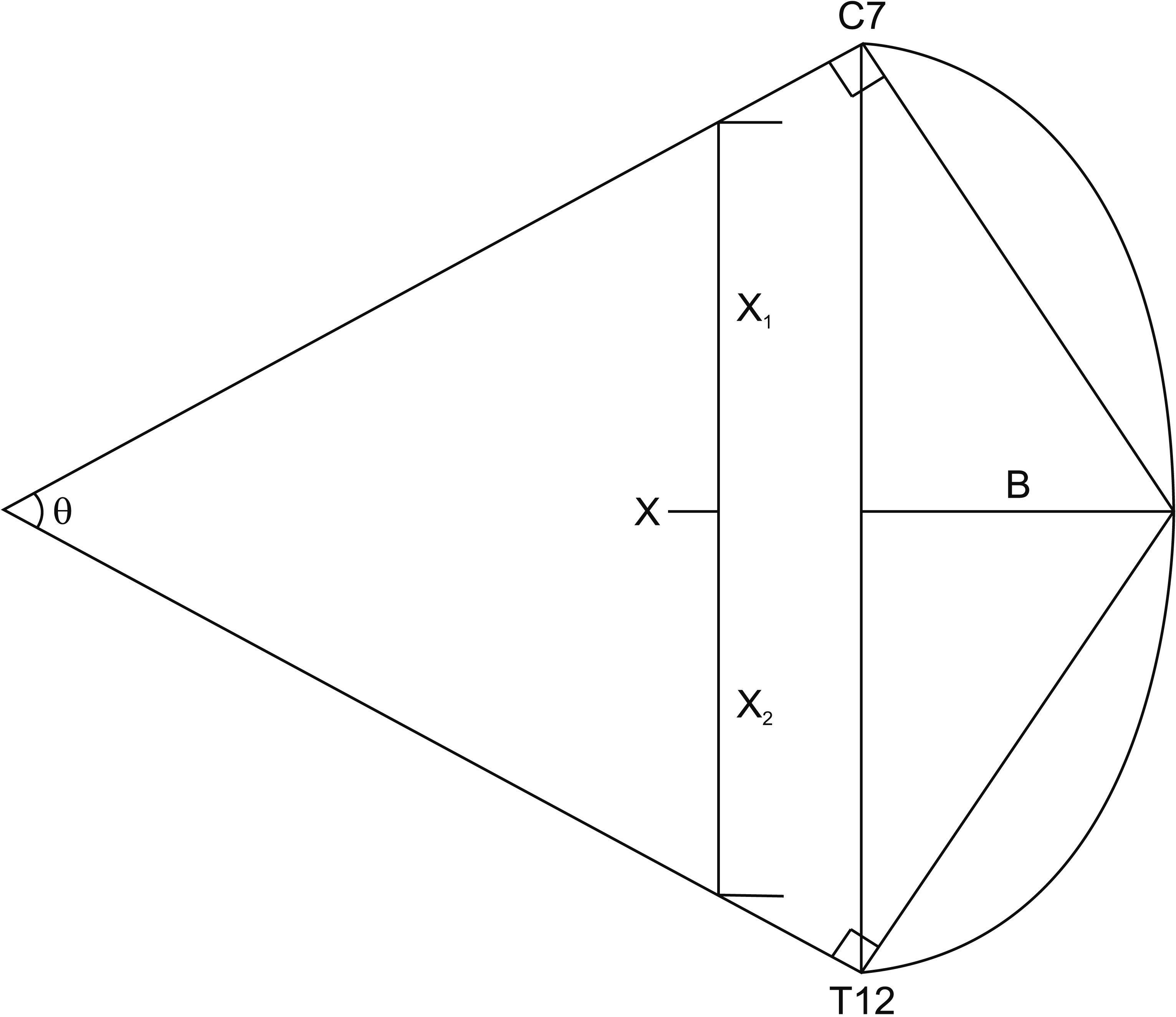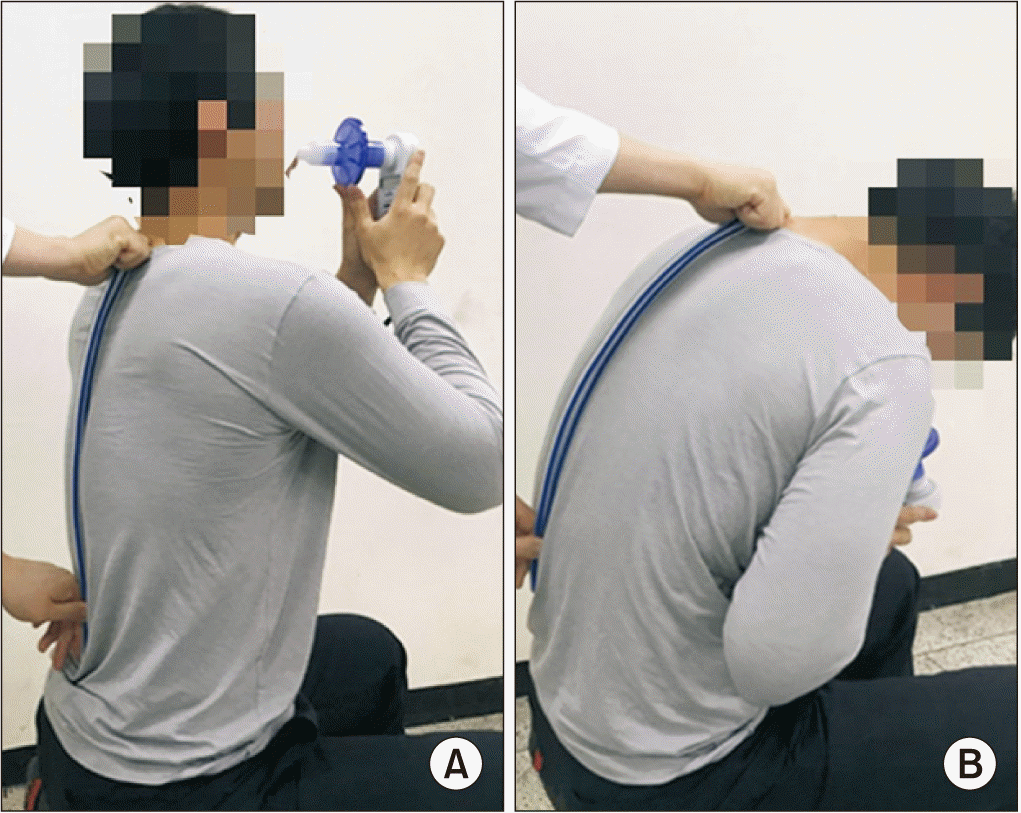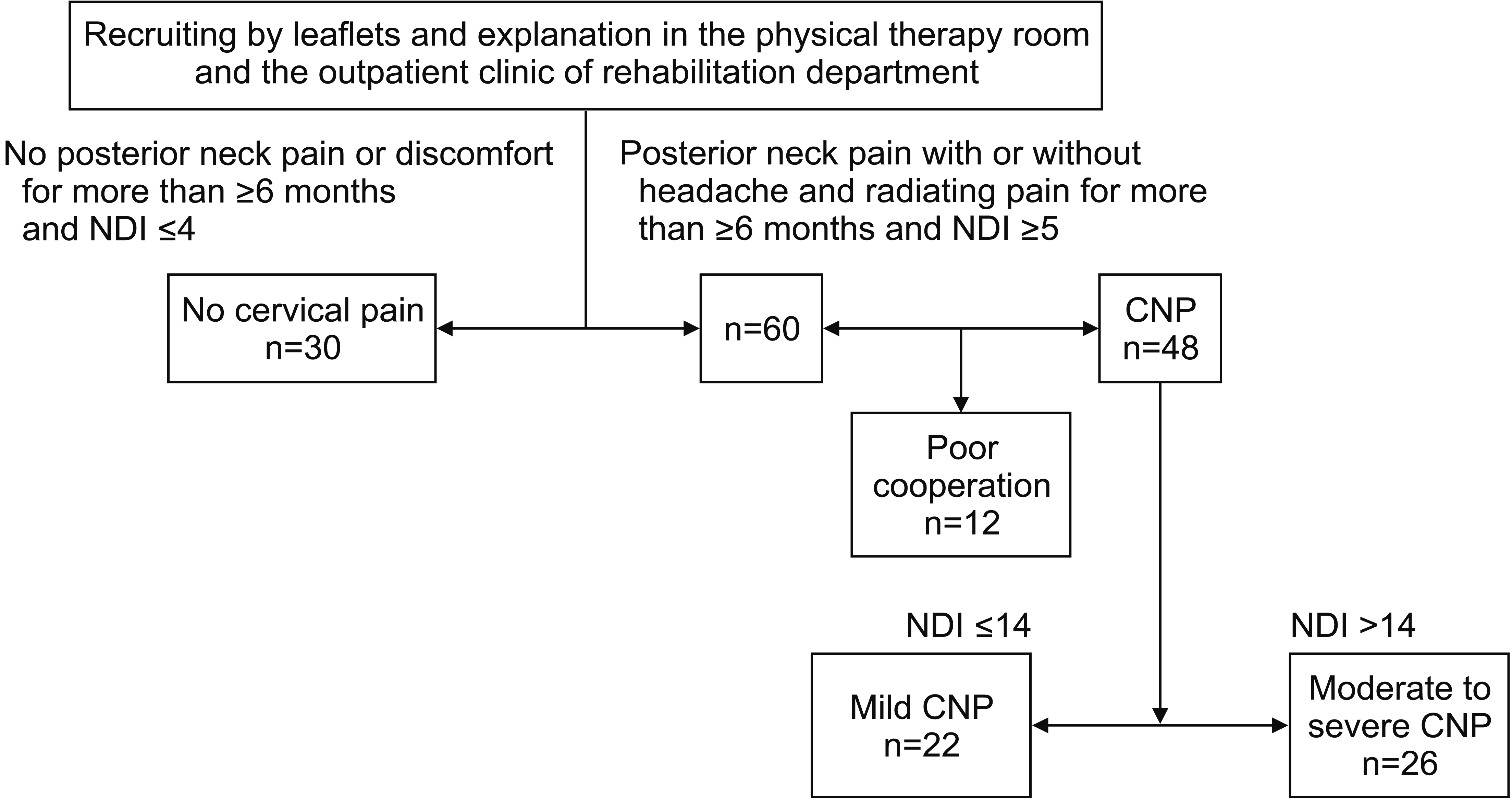1. Cohen SP. Epidemiology, diagnosis, and treatment of neck pain. Mayo Clin Proc. 2015; 90:284–99.

2. Liu F, Fang T, Zhou F, Zhao M, Chen M, You J, et al. Association of depression/anxiety symptoms with neck pain: a systematic review and meta-analysis of literature in China. Pain Res Manag. 2018; 2018:3259431.

3. Dimitriadis Z, Kapreli E, Strimpakos N, Oldham J. Pulmonary function of patients with chronic neck pain: a spirometry study. Respir Care. 2014; 59:543–9.

4. Kapreli E, Vourazanis E, Billis E, Oldham JA, Strimpakos N. Respiratory dysfunction in chronic neck pain patients: a pilot study. Cephalalgia. 2009; 29:701–10.

5. Dimitriadis Z, Kapreli E, Strimpakos N, Oldham J. Respiratory weakness in patients with chronic neck pain. Man Ther. 2013; 18:248–53.

6. Wirth B, Amstalden M, Perk M, Boutellier U, Humphreys BK. Respiratory dysfunction in patients with chronic neck pain: influence of thoracic spine and chest mobility. Man Ther. 2014; 19:440–4.
7. Morita D, Yukawa Y, Nakashima H, Ito K, Yoshida G, Machino M, et al. Range of motion of thoracic spine in sagittal plane. Eur Spine J. 2014; 23:673–8.

8. Lau KT, Cheung KY, Chan KB, Chan MH, Lo KY, Chiu TT. Relationships between sagittal postures of thoracic and cervical spine, presence of neck pain, neck pain severity and disability. Man Ther. 2010; 15:457–62.

9. Ozer Kaya D, Toprak Celenay S. An investigation of sagittal thoracic spinal curvature and mobility in subjects with and without chronic neck pain: cutoff points and pain relationship. Turk J Med Sci. 2017; 47:891–6.

10. Rahman NN, Singh DK, Lee R. Correlation between thoracolumbar curvatures and respiratory function in older adults. Clin Interv Aging. 2017; 12:523–9.

11. Vernon H. The neck disability index: state-of-the-art, 1991-2008. J Manipulative Physiol Ther. 2008; 31:491–502.

12. Song KJ, Choi BW, Choi BR, Seo GB. Cross-cultural adaptation and validation of the Korean version of the neck disability index. Spine (Phila Pa 1976). 2010; 35:E1045–9.

13. Guo GM, Li J, Diao QX, Zhu TH, Song ZX, Guo YY, et al. Cervical lordosis in asymptomatic individuals: a meta-analysis. J Orthop Surg Res. 2018; 13:147.

14. Teixeira FA, Carvalho GA. Reliability and validity of thoracic kyphosis measurements using flexicurve method. Rev Bras Fisioter. 2007; 11:173–7.
15. Yanagawa TL, Maitland ME, Burgess K, Young L, Hanley D. Assessment of thoracic kyphosis using the flexicurve for individuals with osteoporosis. Hong Kong Physiother J. 2000; 18:53–7.

16. Greendale GA, Nili NS, Huang MH, Seeger L, Karlamangla AS. The reliability and validity of three nonradiological measures of thoracic kyphosis and their relations to the standing radiological Cobb angle. Osteoporos Int. 2011; 22:1897–905.

17. Dimitriadis Z, Kapreli E, Konstantinidou I, Oldham J, Strimpakos N. Test/retest reliability of maximum mouth pressure measurements with the MicroRPM in healthy volunteers. Respir Care. 2011; 56:776–82.

18. Gil Obando LM, Lopez Lopez A, Avila CL. Normal values of the maximal respiratory pressures in healthy people older than 20 years old in the City of Manizales - Colombia. Colomb Med (Cali). 2012; 43:119–25.

19. Neder JA, Andreoni S, Lerario MC, Nery LE. Reference values for lung function tests. II. Maximal respiratory pressures and voluntary ventilation. Braz J Med Biol Res. 1999; 32:719–27.

20. Ritchie C, Hendrikz J, Kenardy J, Sterling M. Derivation of a clinical prediction rule to identify both chronic moderate/severe disability and full recovery following whiplash injury. Pain. 2013; 154:2198–206.

21. Ratnovsky A, Elad D. Anatomical model of the human trunk for analysis of respiratory muscles mechanics. Respir Physiol Neurobiol. 2005; 148:245–62.

22. Perri MA, Halford E. Pain and faulty breathing: a pilot study. J Bodyw Mov Ther. 2004; 8:297–306.

23. Lee DG. Biomechanics of the thorax - research evidence and clinical expertise. J Man Manip Ther. 2015; 23:128–38.

24. Gordon AM, Huxley AF, Julian FJ. The variation in isometric tension with sarcomere length in vertebrate muscle fibres. J Physiol. 1966; 184:170–92.

25. Zhang G, Chen X, Ohgi J, Jiang F, Sugiura S, Hisada T. Effect of intercostal muscle contraction on rib motion in humans studied by finite element analysis. J Appl Physiol (1985). 2018; 125:1165–70.

26. Komi P. Strength and power in sport. 2nd ed. Chichester: John Wiley & Sons;2003.
27. Kapreli E, Vourazanis E, Strimpakos N. Neck pain causes respiratory dysfunction. Med Hypotheses. 2008; 70:1009–13.

28. Jull G, Barrett C, Magee R, Ho P. Further clinical clarification of the muscle dysfunction in cervical headache. Cephalalgia. 1999; 19:179–85.

29. Watson DH, Trott PH. Cervical headache: an investigation of natural head posture and upper cervical flexor muscle performance. Cephalalgia. 1993; 13:272–84.

30. Castelein B, Cools A, Parlevliet T, Cagnie B. Are chronic neck pain, scapular dyskinesis and altered scapulothoracic muscle activity interrelated? A case-control study with surface and fine-wire EMG. J Electromyogr Kinesiol. 2016; 31:136–43.

31. Luque-Suarez A, Martinez-Calderon J, Falla D. Role of kinesiophobia on pain, disability and quality of life in people suffering from chronic musculoskeletal pain: a systematic review. Br J Sports Med. 2019; 53:554–9.

32. Leeuw M, Goossens ME, Linton SJ, Crombez G, Boersma K, Vlaeyen JW. The fear-avoidance model of musculoskeletal pain: current state of scientific evidence. J Behav Med. 2007; 30:77–94.

33. Albarrati A, Zafar H, Alghadir AH, Anwer S. Effect of upright and slouched sitting postures on the respiratory muscle strength in healthy young males. Biomed Res Int. 2018; 2018:3058970.

34. Costa R, Almeida N, Ribeiro F. Body position influences the maximum inspiratory and expiratory mouth pressures of young healthy subjects. Physiotherapy. 2015; 101:239–41.

35. Segizbaeva MO, Pogodin MA, Aleksandrova NP. Effects of body positions on respiratory muscle activation during maximal inspiratory maneuvers. Adv Exp Med Biol. 2013; 756:355–63.

36. McAviney J, Schulz D, Bock R, Harrison DE, Holland B. Determining the relationship between cervical lordosis and neck complaints. J Manipulative Physiol Ther. 2005; 28:187–93.

37. Grob D, Frauenfelder H, Mannion AF. The association between cervical spine curvature and neck pain. Eur Spine J. 2007; 16:669–78.





 PDF
PDF Citation
Citation Print
Print






 XML Download
XML Download